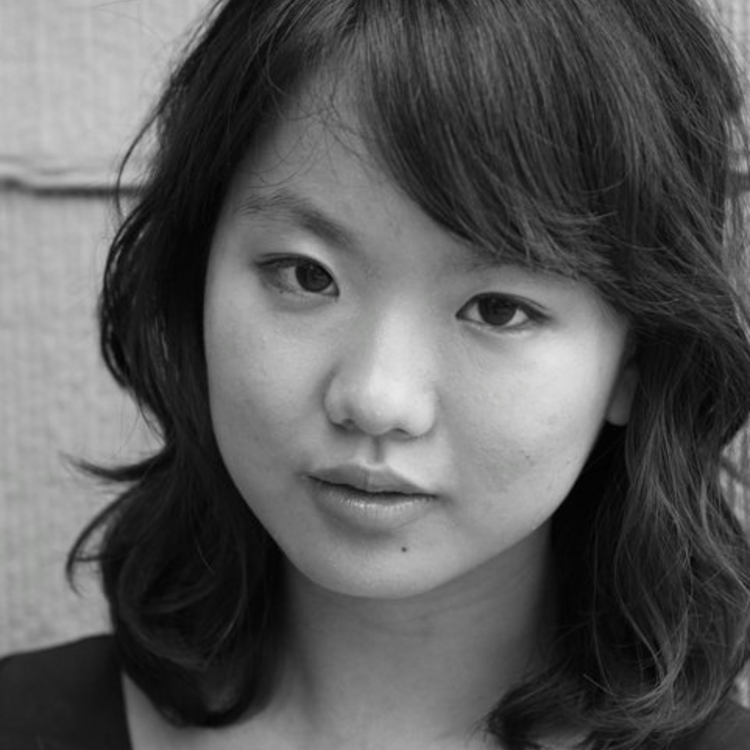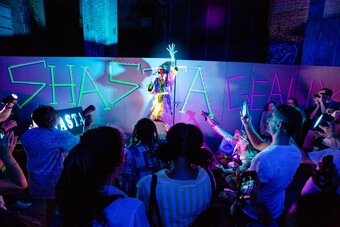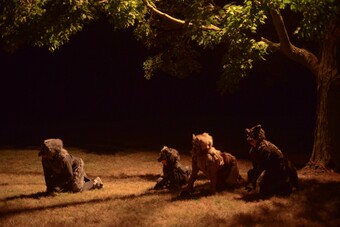We Are The Play
How I Learned to Make Theater as a College Student, or a Case for Working With our World
This is a post for the School Days series, which solicits submissions from undergraduate theatermakers from around the country and beyond. This series is curated by Thea Rodgers.
In the contemporary world of theater, the play is put on a pedestal. The play is sacred. We sit around a table trying to find the mystical “world of the play.” When an actor asks a question in rehearsal, the director responds, “What does the play want?” Then they have a conversation trying to figure out what the illusive play must want. But the play is not out there floating around for them to discover. The play is the moment before the actor asked the question and the next time the actor will try something, already there, already alive. I believe that theater must never serve the mystical play more than the people in the room. The living, breathing people in the room making the play, and the real, human world that they live in, are always more important than the play.
I am an undergraduate at a university with an excellent theater and liberal arts program. But I chose my school because of its vibrant student theater scene. I knew that for me, doing was as important as the learning. I see at least two, maybe three shows a weekend, and I still miss a bunch of them. My peers demonstrate inspirational passion putting in hours outside their busy academics to just do. Make. But as nineteen, twenty, twenty-one, twenty-two year olds, it’s not always easy to give ourselves the permission to do when we are constantly younger than our characters, when we don’t always have the money and technical prowess of fancy professional theaters to make the magic happen.
I see a gap—between the virtuosic theater artists we want to be and the young, confused beings we are. The student director who wants to direct a demanding musical and realizes we don’t have enough strong male singers. The desire to tell stories of a crumbling marriage or a death of a child, things we simply do not have the life experience to understand right now.
How to close this gap? How to take advantage of it, when we live in the safety of the academic bubble, and are not yet the fully formed beings we are going to be?
I believe that the answer is around us. If we committed to actually working with the world, each production could be a revolution. What if, for instance, instead of constantly complaining there weren’t enough roles for women on campuses, we took a realistic look at the campuses’ existing gender balance, and chose, or better yet, devised work that would suit it?
When we as young people are given the gift of resources to put up a show, we need to start with a careful examination of our context before choosing the work. We can work out-in, rather than in-out. Context is everything: it is the world that surrounds the play, and provides numerous questions that can be overwhelming—or guiding, depending on how you look at it. Where will the play be performed? What does the venue look like? Who is the audience? Who will be the available actors, and what kind of unique skills do they have? How much money and resources do we have already? When requests for more funding go unanswered, or a Kickstarter fails to reach its goal, perhaps we should learn to work with what we have—liberate ourselves from the idea that we need more, and indulge ourselves in our fortunate relationship to the world. Moreover, we need to listen to the world, both globally and locally. What is happening, what are people talking about, what do people want to talk about? Only after asking and answering those questions thoroughly should we choose, or make from scratch, a play that suits us.
My most personally fulfilling project at school was co-directing an original piece inspired by Just Kids, the memoir by Patti Smith on her life as an artist and her relationship with the late photographer Robert Mapplethorpe. This book had inspired me, my co-director Sammy, and many of our friends, with its poignant account of young souls becoming artists. We sensed an obsession, a need from the young makers around us to express the romanticism and the confusion that we were going through.
We cast the show before we wrote it, and created the script from our knowledge of our performers and their answers to writing prompts that we made up. In our show, you didn’t have to look like Patti and Robert to play Patti and Robert. In fact, everyone switched off playing Patti and Robert. The ones that loved to sing sang. The ones that played guitar played guitar. The production was completely ephemeral—if we were to work on Just Kids again, we would start over, with a new space, with new actors. We spent little to no money on the project, using minimal yet specific tech elements and using personal items as props and costumes, and did not charge admission. In our young world where, as Ira Glass once said, our skills inevitably do not match our tastes, this process, working from what we had, felt refreshing and reaffirming.
I wanted to express this message specifically from the undergraduate perspective to other undergraduates because we are the next generation of theater makers. If we worked this way, perhaps we could remedy the lack of ethnic diversity in most theater scenes, even in the most diverse of communities, if we committed to actually utilizing the diversity that already exists in the world. Why not dare a group of actors or an interesting performance space to inspire a script that would suit it, rather than the other way around? Why don’t designers dig through storages and thrift stores before making their designs, and be inspired from there, instead of spending unnecessary money to serve the mythical “play?” We can reject needless consumerism. We can create the play we want to see, instead of always swimming to look for it.
The play is equal to its context, not above it. We are the world, and we are the context; without us, the play is words on a paper, an illusive idea in a vacuum. We are its blood and flesh: raw and ephemeral. We are the play.
At my school, the most commonly used student performance space is the Shanley Pavilion, a former WWII weapon shack, a dingy black hut with three poles running down its center. I love this space, because the poles are an undeniable element of the world that you have to confront. The most successful productions I have seen in Shanley did not obscure or ignore the poles but use the heck out of them instead. WAVE, the student theater company I am part of, started a “studio” slot in Shanley two years ago, responding to designer fatigue and abundance of actors in our community. The slot offers a very limited design budget and instead encourages directors to showcase what we have an overflow of: talented performers. This is one of my favorite new traditions, because it was born out of what our world needed.
I would love to hear, and be inspired by, everyone else, college students or not: how have you worked with your community, from your surroundings? How have the things, people, and places around you served as your biggest inspirations?












Comments
The article is just the start of the conversation—we want to know what you think about this subject, too! HowlRound is a space for knowledge-sharing, and we welcome spirited, thoughtful, and on-topic dialogue. Find our full comments policy here
When I first met Paul Edwards, my favorite teacher, he would say over and over again, "Write something, put it on. Write something, put it on." I resisted applying to direct my first play because I knew i would have to do it in the Annie May Swift studio, and I thought it was beneath me. But to anybody who is just starting out, a weird space is a gift. It forces you to think creatively in a small environment, which you have the control over. If you're just starting out, you should grab any space you can and embrace it: love it for what it's providing you with, and love it for how much it can suck sometimes (and the AMS studio, god love it, can suck sometimes).
Also, Northwestern has become an incredible space for devising work in the past few years, allowing chances for stories to be generated by the ensembles, and not shoehorning people into roles that may not be right for them. That's why Hannah Greene and Darren Barrere's Wizard of Oz was so great--the actors fused with the characters, and it didn't matter if a girl was the Tin Man, or if Toto was Jon Schneidman with a guitar, you bought it. This kind of theatre gives power to the audience's creative imagination.
The lesson I find myself learning over and over again is that if you tell the audience that something is a tree, even if it's just one of the Shanley poles, or even just an actor with a stick, it's a tree. Let them become part of the story, the way the actors become part of the story, the way the space becomes a part of it. It all lets us be more creative as a result. Write something, put it on.
(This is Jeremy Fassler, btw, but I call myself Joe Gillis so I can anonymously snark movie message boards)
Especially as young artists, it is so easy to want to be someplace else, someone else. In that process of reaching outside ourselves, we easily stumble, and miss the whole point. How can we localize our work to reflect our own bodies and communities?
Perhaps we must view theatre as a process of placemaking, and ourselves as actors in that process. What does it mean for a place to be created and destroyed so quickly? How does one do that efficiently, artistically, and ethically? Can we create launchpads for greater connection, rather than attempting to connect in stilted ways?
Let's be conscious of who we are, where we are, and not try to hide that in the pursuit of the grandiose, or "capital-A-Art." We are learning, let us learn.
Nicely said. Exciting to read your words and thoughts. Thank you.
Brava. Wonderfully articulated. I want to see your work.